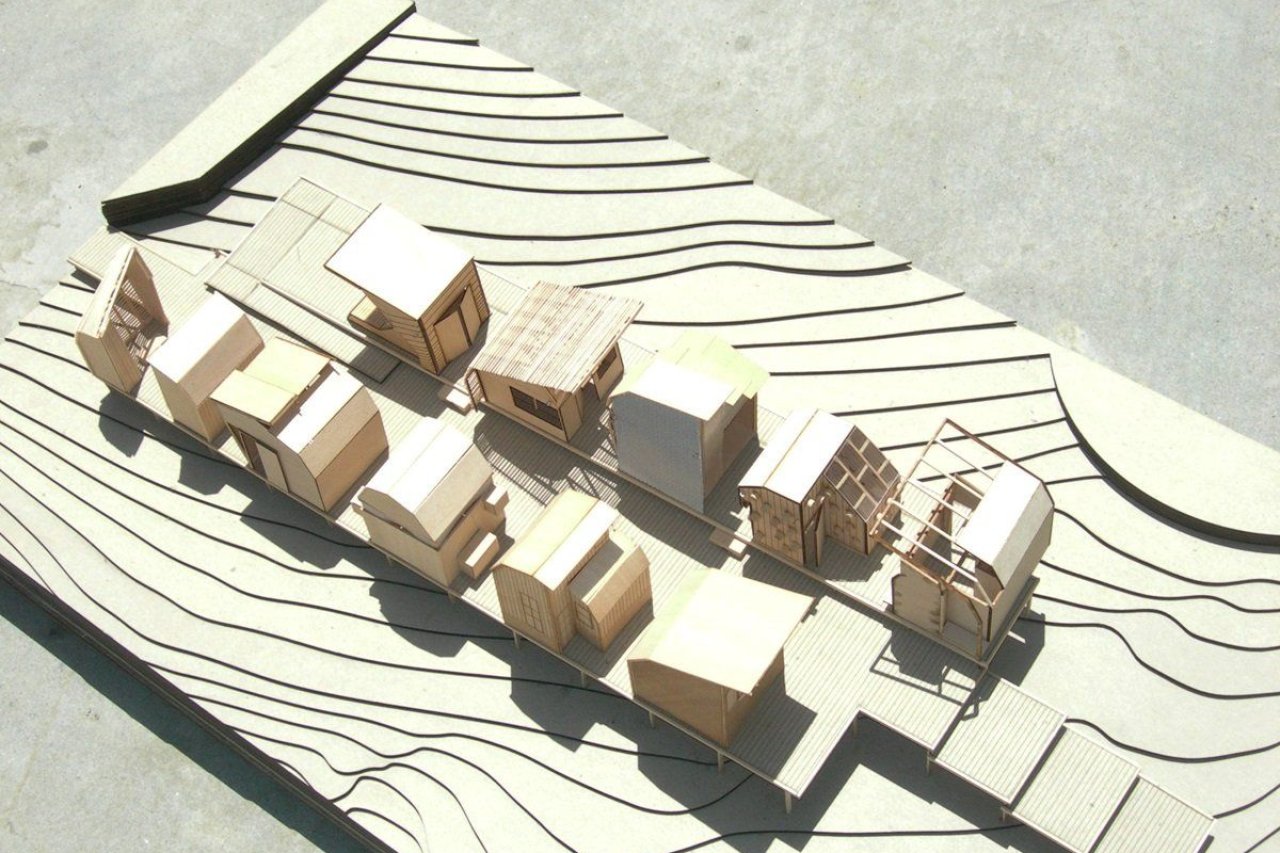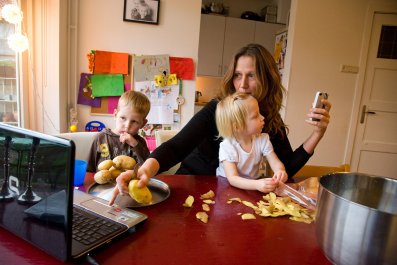New clients have sometimes wondered whether Sonny Ward was putting them on or just plain crazy. The Los Angeles-based architect recalls the reception he got from the directors of Camp Sister Spirit, a feminist retreat in rural Mississippi. They were anything but amused by his proposal to build them a cabin out of discarded cardboard boxes, Ward says. "They were like, 'Who are you, and why are you coming here?' "
The women's doubts were understandable. It wasn't just the patent absurdity of using such flimsy material for permanent housing. It was also their camp's difficult history. Located in the heart of the Bible Belt, the place gave refuge to lesbians and survivors of domestic abuse, and in the past, some of their backwoods neighbors had displayed such hatred that the FBI and the U.S. Justice Department were called in. (No charges were filed.) The directors couldn't help feeling suspicious.
But Ward, who had grown up in the state himself before moving west, persisted. Now the principal of an architecture firm in West Hollywood, he's a devout believer in both social responsibility and the creative use of what architects call materials at hand: construction materials that can be used in a pinch even if they lack showroom appeal. Ward was determined to do something for the camp's women, who, for want of a better alternative, were sheltering at night in prefab tool sheds. The directors finally agreed to let him show what he could do.
In the 10 years since, that 100-square-foot cabin has become a spiritual symbol of the camp. It has enshrined the women's outsider status, built as it was from materials that had been thrown away by mainstream society. The cabin's walls are made from corrugated cartons that local stores had consigned to the trash, stacked and compressed and held together by threaded steel rods and plywood plates. The outer skin consists of cardboard shingles dipped in latex paint to provide weatherproofing. The structure is built tough – strong enough so that it easily defied the might of Hurricane Katrina in 2005. And the price was certainly right: The project was funded by a $3,000 grant from the Arcus Foundation via the University of California at Berkeley.
Ward went on from the Sister Spirit project to spread the gospel of "architecture as social service" as an adjunct faculty member at Woodbury University in Burbank, Calif., where he'd received his bachelor's degree. Before long, the message recruited a small army of followers. At the school's Architecture + Civic Engagement (ACE) Center, Ward and the program's originator and director, Jeanine Centuori, are helping students find ways to build a better world. "We look for social and environmental causes that are off the beaten path," says Centuori. "We look for sites and organizations where there is the potential for architecture to make a difference." ACE participants have created housing for the homeless on L.A.'s Skid Row and designed a school for the children of Darfur refugees living in Chad – the plans for which won several awards, though because of logistical challenges in the war-ravaged region, the school has never been built.

Ward and Centuori weren't the first in the field. Their inspiration came from the late Samuel "Sambo" Mockbee, who co-founded the Rural Studio program at Auburn University in Alabama. Mockbee's aim was to build what he called "shelter for the soul": attractive, affordable housing for the poor in rural Alabama and elsewhere. Ward calls the ACE program "a quicker, grittier, lower-budget urban version" of that model. It's an idea that has spread across the country, says Ward, who refers to Mockbee's vision as "the benchmark for socially motivated architecture in academia." Another notable example is a similar program developed at Tulane School of Architecture in New Orleans after Katrina. That, in turn, gave the impetus to Make It Right, an organization set up by actor Brad Pitt to build imaginatively designed, environmentally sensitive housing for residents of the city's impoverished Ninth Ward.
Ward and Centuori continue to seek out new challenges for their aspiring architects. This past spring, the students honed their materials-at-hand talents in Shadow Hills, Calif., at the Shadow Hills Riding Club, a nonprofit center offering equine-assisted therapies for people with a range of disabilities, from autistic children and paraplegics to veterans struggling with post-traumatic stress. Using cheap and recycled materials, such as flattened plastic bottles, the ACE participants transformed 10 donated storage sheds into comfortable, habitable multiuse structures with good natural light, ventilation and insulation, and sleeping space for two. More recently, they've focused on another horse-themed job, planning and building a whole array of facilities for Taking the Reins, a nonprofit designed to boost the self-confidence of low-income girls in Los Angeles through participation in equestrian and urban farming programs. The projects include an outdoor kitchen and eating area, a chicken coop and a produce store. Leaders hope to eventually link the compound to a larger economic-revitalization program along the Los Angeles River.
Centuori and Ward take special joy in designing and building on a human scale, in contrast to the grandiose schemes that people usually associate with their profession. "Architectural school is academic," Centuori says. "It's about high-tech manipulation of form, [and] large things like museums and airports. This is the opposite end of the spectrum." And unlike stereotypical architects, she and Ward and their students can make real, personal connections with the people who will use their buildings. "It's like a barn raising," she says. "There's a sense of collaboration."
Ward shares her appreciation of the humble and the practical. "It's not enough just to be excited by design," he says. In his view, what counts most is what he calls "the story of the building" – the living, breathing people who will inhabit that design and give it meaning.























